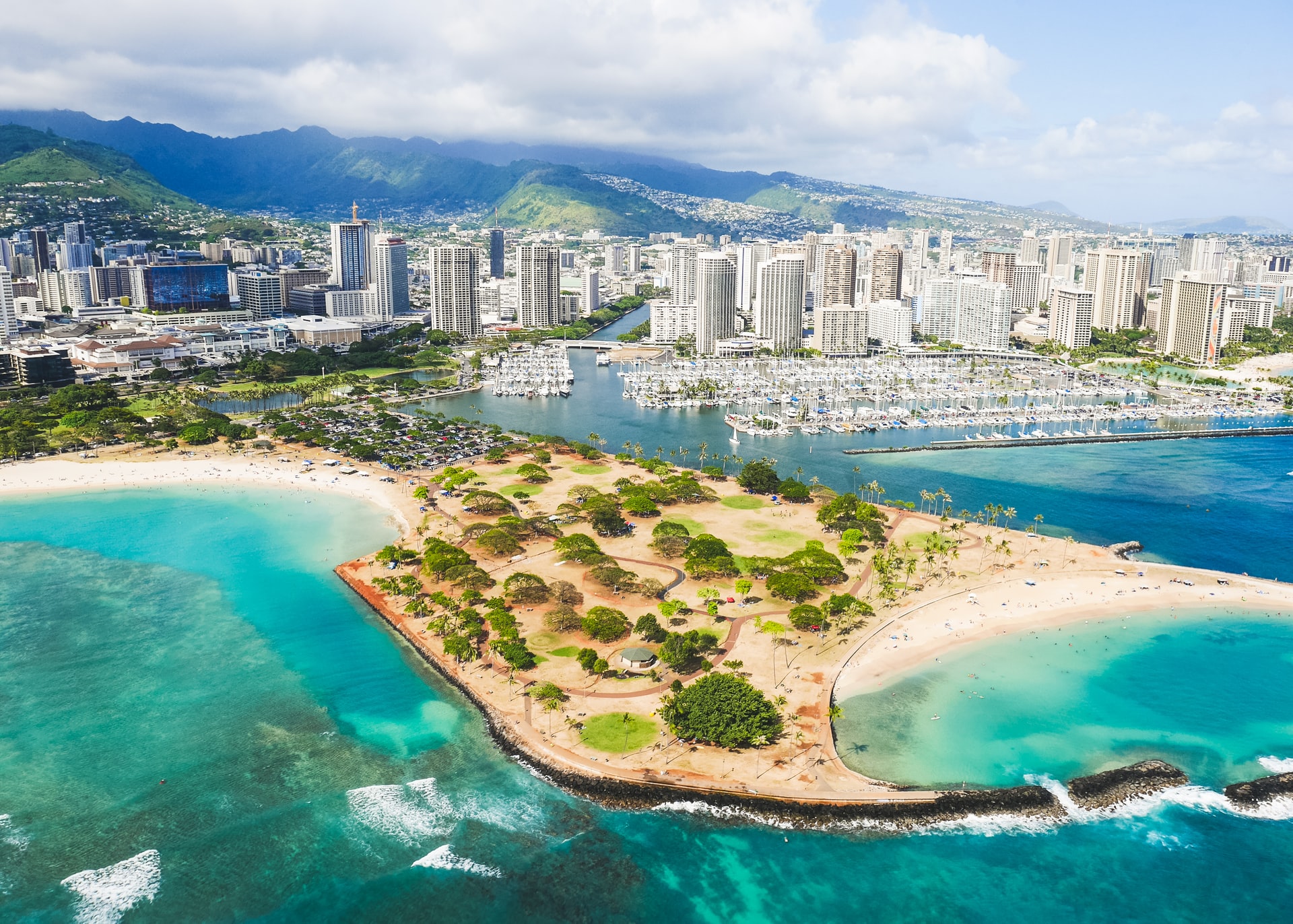From volcanic landscapes and tropical beaches to rich cultural traditions, Hawaii is a unique and vibrant place to call home. Understanding your health insurance options here is essential to protecting both your well-being and financial security.
As of 2025, Hawaii continues to maintain one of the nation’s lowest uninsured rates, a testament to the state’s early adoption of Medicaid expansion and consistent efforts to broaden coverage access. If you’re currently without insurance, here’s what you need to know about getting covered in the Aloha State.
Health Insurance Options in Hawaii
Hawaii offers a range of health insurance options designed to meet residents’ needs based on income, age, employment, and family situation. Here are the most common types of coverage:
Employer-Sponsored Insurance
Many Hawaii residents receive health insurance through their employers. If your workplace offers this benefit, it’s often your most affordable and straightforward option.
ACA Marketplace Plans
The Affordable Care Act (ACA) allows individuals and families to buy health insurance through federal or state Marketplaces. These plans offer essential health benefits, free preventive care, and protection for preexisting conditions.
Individuals and families without employer coverage can shop for insurance through [STATE’s official ACA marketplace, e.g., Covered California, Pennie, Access Health CT, etc.].
If you don’t have employer coverage, you may qualify for subsidies to lower your premiums. Use our ACA Subsidy Calculator to check your eligibility.
Starting this year, the Centers for Medicare & Medicaid Services (CMS) is requiring income verification to confirm eligibility for premium subsidies. As part of this effort, CMS will reduce the ACA subsidies by $5 per month for individuals who are automatically re-enrolled in fully subsidized plans without verified eligibility.
ACA Plan Types
ACA marketplace plans are available in four tiers: Bronze, Silver, Gold, and Platinum, each with distinct costs and coverage levels. Plans also vary by provider networks and out-of-pocket expenses, so compare carefully to find what fits your needs.
Marketplace Plans:
- Bronze: Low monthly premiums, higher out-of-pocket costs; ideal for minimal healthcare usage.
- Silver: Moderate costs; eligible for cost-sharing reductions (CSRs).
- Gold: Higher monthly premiums with lower out-of-pocket costs; best for frequent healthcare users.
- Platinum (if available): Highest premiums, lowest out-of-pocket costs.
Metal Tier Breakdown:
| Metal Tier | Insurance Company Pays | Consumer Pays |
| Bronze | 60% | 40% |
| Silver | 70% | 30% |
| Gold | 80% | 20% |
| Platinum | 90% | 10% |
Medicaid
Hawaii’s Medicaid program, called QUEST Integration, provides free or low-cost healthcare to qualifying low-income residents. Covered groups include adults without children, families, pregnant women, children, seniors, and people with disabilities.
Medicaid plan benefits typically include preventive care, hospital visits, mental health, prescriptions, and more. You can apply at any time of year and will be enrolled if eligible based on household size, income, and other factors.
Children’s Health Insurance Program (CHIP)
For families whose income is too high for Medicaid but still need help affording health coverage for their children, CHIP may be an option. In Hawaii, CHIP is part of the state’s Medicaid program and helps ensure that children under 19 can receive regular healthcare, including preventive services and treatments.
Student Health Insurance
Students in Hawaii have multiple options for health insurance:
- Stay on a parent’s plan until age 26
- Enroll in a school-sponsored student health plan
- Shop for a plan on the ACA Marketplace
Depending on income and circumstances, students may also be eligible for Medicaid, CHIP, or other affordable coverage options.
College students in any state have multiple health insurance options, including staying on a parent’s plan until age 26, enrolling in a school-sponsored plan, or applying for coverage through the ACA Marketplace. Depending on your income and location, you may also qualify for Medicaid, CHIP, or low-cost catastrophic or short-term plans, making Hawaii student health insurance accessible and flexible for a wide range of needs.
Medicare
Medicare is available to Hawaii residents aged 65 and older, as well as to certain younger individuals with disabilities or chronic conditions. Key options include:
- Medicare Advantage (Part C)
- Medicare Advantage is an alternative to Original Medicare offered by private insurers to those enrolled in Parts A and B. These plans often include extra benefits and cost protections but typically require using a specific network of providers.
- Prescription Drug Plans (Part D)
- Medicare Part D provides prescription drug coverage for anyone with Medicare, helping pay for medications and many vaccines. Offered by private insurers, these plans vary in cost and coverage and can be joined during specific enrollment periods.
- Medicare Supplement (Medigap)
- Medicare Supplement plans, or Medigap policies, help cover the out-of-pocket costs that Medicare Part A and Part B don’t pay. Since Original Medicare (Parts A and B) lacks an out-of-pocket maximum, these plans can limit your expenses for medical services.
COBRA Coverage
If you’ve recently lost job-based coverage, COBRA allows you to temporarily keep the same health insurance, typically for a limited period. This option ensures uninterrupted coverage, though it may be more expensive than other choices.
Short-Term Plans
Short-term medical (STM) plans offer flexible, low-cost coverage for up to four months, ideal for healthy individuals in transition. However, STM plans aren’t guaranteed issue, lack subsidies, and may exclude key benefits like maternity, mental health, and pre-existing conditions—making them less suitable for long-term or comprehensive needs.
Explore all non-ACA health plans that may fit your needs and lifestyle.
Enrollment Periods in Hawaii
Open Enrollment for 2026 Coverage:
November 1, 2025 – January 15, 2026
During this time, all eligible residents can apply for, renew, or change their health insurance plans through the federal Marketplace.
Special Enrollment Period:
Outside of Open Enrollment, you may still qualify to enroll if you experience a qualifying life event (QLE), such as:
- Losing other health coverage
- Getting married or divorced
- Having a child
- Moving to a new location
- Significant change in income
In most cases, you have 60 days from the event to enroll in a new plan.
Health Insurance Providers in Hawaii
As of 2025, the following insurers offer individual and family plans through the federal Marketplace in Hawaii:
You may also purchase plans directly from these insurers, but only Marketplace plans offer access to federal financial assistance.
Understanding Health Insurance Costs
When choosing a health plan, be sure to understand these cost-related terms:
- Premium: Your monthly payment to maintain the insurance.
- Deductible: What you must pay before your plan begins to pay for covered services.
- Copayment: A fixed amount you pay for a service, like a doctor’s visit.
- Coinsurance: A percentage you pay after meeting your deductible.
- Out-of-Pocket Maximum: The most you’ll pay in a year for covered healthcare services.
- In-Network vs. Out-of-Network: Using in-network providers will typically reduce your costs.
Understanding health insurance doesn’t have to be overwhelming. This glossary offers clear definitions of key terms—from agents to costs like copayments, coinsurance, and deductibles—to help you make confident coverage decisions.
Bottom Line
Health insurance in Hawaii comes with diverse options — from employer plans and ACA marketplace coverage to government programs like Medicaid and Medicare. By understanding your choices and enrollment windows, you can find a plan that fits your healthcare needs and budget.
Need help choosing a plan? Use our ACA Subsidy Calculator to see if you are eligible for ACA plan financial aid or speak with a licensed insurance agent about all your options.



